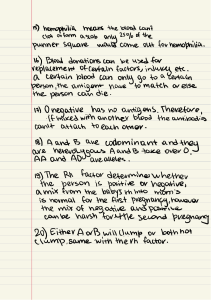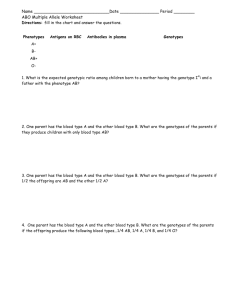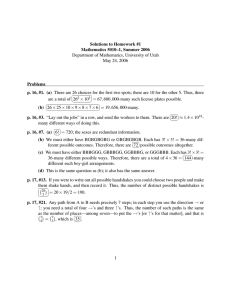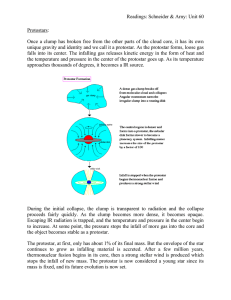Math 5010-1, Spring 2005 Assignment 1 Problems
advertisement
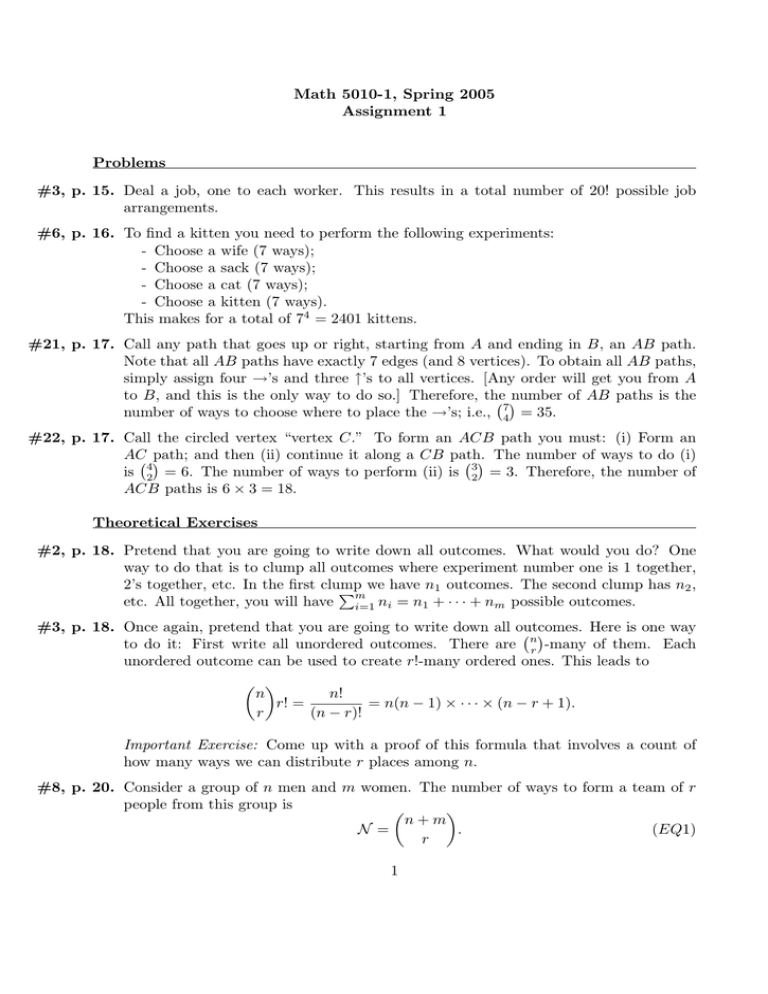
Math 5010-1, Spring 2005 Assignment 1 Problems #3, p. 15. Deal a job, one to each worker. This results in a total number of 20! possible job arrangements. #6, p. 16. To find a kitten you need to perform the following experiments: - Choose a wife (7 ways); - Choose a sack (7 ways); - Choose a cat (7 ways); - Choose a kitten (7 ways). This makes for a total of 74 = 2401 kittens. #21, p. 17. Call any path that goes up or right, starting from A and ending in B, an AB path. Note that all AB paths have exactly 7 edges (and 8 vertices). To obtain all AB paths, simply assign four →’s and three ↑’s to all vertices. [Any order will get you from A to B, and this is the only way to do so.] Therefore, the number of AB paths is the number of ways to choose where to place the →’s; i.e., 74 = 35. #22, p. 17. Call the circled vertex “vertex C.” To form an ACB path you must: (i) Form an AC path; and then (ii) continue it along a CB path. The number of ways to do (i) is 42 = 6. The number of ways to perform (ii) is 32 = 3. Therefore, the number of ACB paths is 6 × 3 = 18. Theoretical Exercises #2, p. 18. Pretend that you are going to write down all outcomes. What would you do? One way to do that is to clump all outcomes where experiment number one is 1 together, 2’s together, etc. In the first clump Pm we have n1 outcomes. The second clump has n2 , etc. All together, you will have i=1 ni = n1 + · · · + nm possible outcomes. #3, p. 18. Once again, pretend that you are going to write down all outcomes. Here is one way n to do it: First write all unordered outcomes. There are r -many of them. Each unordered outcome can be used to create r!-many ordered ones. This leads to n n! r! = = n(n − 1) × · · · × (n − r + 1). r (n − r)! Important Exercise: Come up with a proof of this formula that involves a count of how many ways we can distribute r places among n. #8, p. 20. Consider a group of n men and m women. The number of ways to form a team of r people from this group is n+m N = . (EQ1) r 1 Suppose we were to list out all such teams. One way to do this is to clump together n m all ways to create a team of r women [ 0 r ways]; clump together all ways to create a m team of (r − 1) women and 1 man [ n1 r−1 ]; etc. This leads us to r X n m N = . i r − i i=0 Because (EQ1) and (EQ2) must agree we are done. 2 (EQ2)
